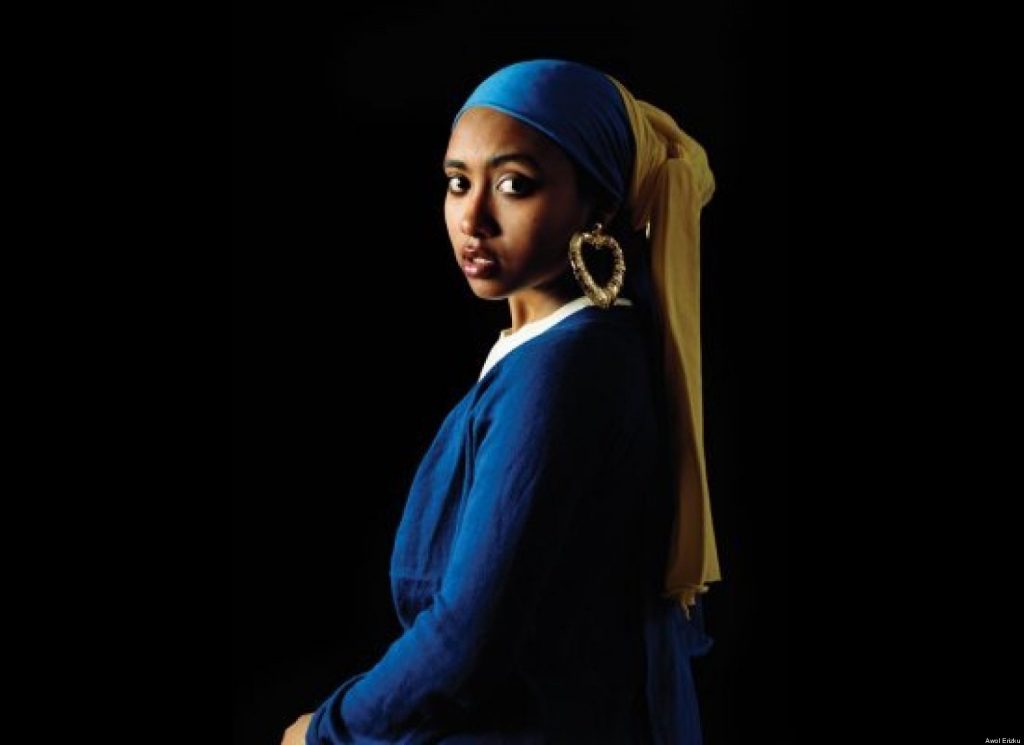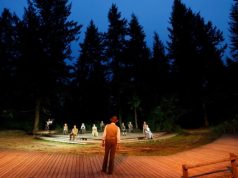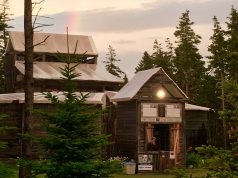
2016
I’m writing this on Canada Day as I travel to Shaw in Niagara-on-the-Lake to see Master Harold and the Boys, directed by Philip Akin, and Adventures of a Black Girl in her Search for God, a GBS story adapted by Lisa Codrington. This is the perfect weekend to reflect on the state of Canadian Theatre and how it has evolved. I will attempt to show its ephemeral nature by looking at it from my perspective as a London, Ontario native who started consuming theatre in 1986.
1985-1989
London was a place where I was called nigger and coon on a regular basis; that’s just how it was in the pretty town nicknamed the Forest City. I was used to being excluded but I chalked it up to my being a weird kid. Not a weird black kid, just weird. I collected rocks and read ‘Wuthering’ Heights in the old English. Being perceived as an outsider makes you a perfect candidate for the arts but it wasn’t until high school that I found an outlet for my peculiar desire to ‘live out loud’.
I attended H.B. Beal, a technical school, where I was in the Television & Broadcasting program. CanCon (Canadian Content) was being forced down the throats of radio stations in that 30% of their content had to be Canadian. So, while we, the listening audience, would have preferred to listen to 12 hours of Bad Brains, The Cure, Bruce Springsteen, and The Pogues, the CRTC regulated that 3 of those hours had to be dedicated to Gowan, Kim Mitchell, Maestro Fresh Wes and Skinny Puppy, et al. And while it may have felt like being force fed vegetables I’m happy I got to know the music of Amanda Marshall, Gordon Lightfoot, Neil Diamond, and Liberty Silver. Popeye was right: spinach is really good for you.
I became interested in theatre in high school because I had a spare; the curriculum could have used a CRTC-like nudge. My drama teacher taught theatre by making us study ‘Phantom of the Opera’ and ‘Les Miserables’. She taught us about auditioning by performing an interpretive dance to ‘Running Up that Hill’ by Kate Bush. Is it any wonder I was ignorant of Canadian Theatre in the 80’s? Andrew Lloyd Webber probably has no idea where London was on a map in spite of its name.
Thank Heavens for Martha Henry, who, as the Artistic Director of The Grand Theatre, programmed ‘A Warm Wind in China’ by Kent Stetson in her first season at the company – a play about AIDS starring a beautiful 38-year-old actor named Philip Akin, I was engaged completely. I had never seen a black man on stage before, nor had I been exposed to homosexual relationships portrayed so matter of fact; the scales fell from my eyes and I saw theatre as an honest portrayal of real life.
I was foolish. I bounded up to my theatre teacher and told him I couldn’t wait to audition for the next season of plays at our high school. “Don’t bother auditioning, Andrea,’ he said, ‘there are no black parts.’ Well, at least he said it out loud. Eventually my school produced ‘The Crucible’ and guess which role I played? No, not Abigail, but nice try.
1991
It wasn’t until I went to the University of Toronto for theatre that I was exposed to Canadian Theatre in the form of Judith Thompson, George F Walker, Paul Thompson, Michelle Tremblay, Linda Griffiths, and James Reaney. You will notice the lack of diversity but, at the time, I did not; I was used to my experiences being invisible.
Shortly after getting my degree, Djanet Sears won four Doras and a Chalmers for ‘Harlem Duet’ in 1997. It had been almost 10 years since I’d seen a strong black character on stage and now there was more than one. Nigel Shawn Williams, Barbara Barnes Hopkins, Dawn Roach, Jeff Jones, and Alison Sealy-Smith gave me hope. I brought my mother to see the play to prove to her that my desire to become an actor was not folly. A few years later we were gifted with ‘Riot’ by Andrew Moodie, which was also awarded a Chalmers. Black lives on stage were becoming a reality. You cannot truly comprehend how important it is to see people who look like you on stage that reflect your experiences authentically.
1997-2002
But like ‘Waiting to Exhale’, which gave all black people hope, Sears and Moodie were a hiccup and there wasn’t a rush of coloured playwrights given the opportunity to fill the creative void. I auditioned for endless slave roles in Black History Month plays as well as mothers weeping for their dead sons on movies of week. It wasn’t creatively interesting or challenging and I decided to become a lawyer. If I wasn’t going to be creativel I might as well make a good salary, I thought. And then “Da Kink in My Hair’ and ‘The Adventures of a Black Girl in Search of God’ hit Toronto and I re-considered the LSAT.
2002-2010
Amidst the temp jobs, TV guest spots, and great TYA shows at Roseneath and Carousel Players I was given the chance to be in Canadian Stage’s ‘Omnium Gatherum’ where I played a black woman who could not sing a Whitney Houston song (and work with my dream actor, Nigel Shawn Williams) followed by Factory Theatre’s production of ahdri zhina mandiela’s ‘who knew grannie’ where I was allowed to play with Marcel Stewart, Miranda Edwards and Joseph Jomo Pierre. Our last show was on Easter Sunday and I did feel re-born as a creator in Toronto theatre.
2010-2016
6 years later, I am a playwright. I can’t believe there are two plays dominated by black artists at the Shaw Festival. As I sat on a bench outside the Court House Theatre before the show, eyes closed enjoying the sun, I was happy to hear the honeyed voice of Philip Akin approach me, ‘Who’s that brown girl sunning herself on the bench? Hello, Miss. Scott!’ I had come full circle. 28 years later the actor was now a director and the adoring fan is a playwright with her own show opening in four weeks.
For our theatres to change and evolve the people who held the keys to the castle had to step aside and let a new generation of diverse creators make decisions and the results have been glorious. We are lucky to have David Yee, Joseph Jomo Pierre, and Tara Beagan in our midst because they will continue to inspire a new generation to create. To ask, ‘Where is Canadian Theatre Now?’ implies that it is an ever fix’d thing, rather than an amorphous, living entity subject to changeability. Canadian Theatre is us and we cannot be locked into a static identity because to be static is to die.
To quote Maestro Fresh Wes: ‘This is a throw-down, a showdown, hell no, I can’t slow down. …. This aint a game, I’m on a mission.’
Mic drop.
*Can You See Me Yet? – a play by Timothy Findley









